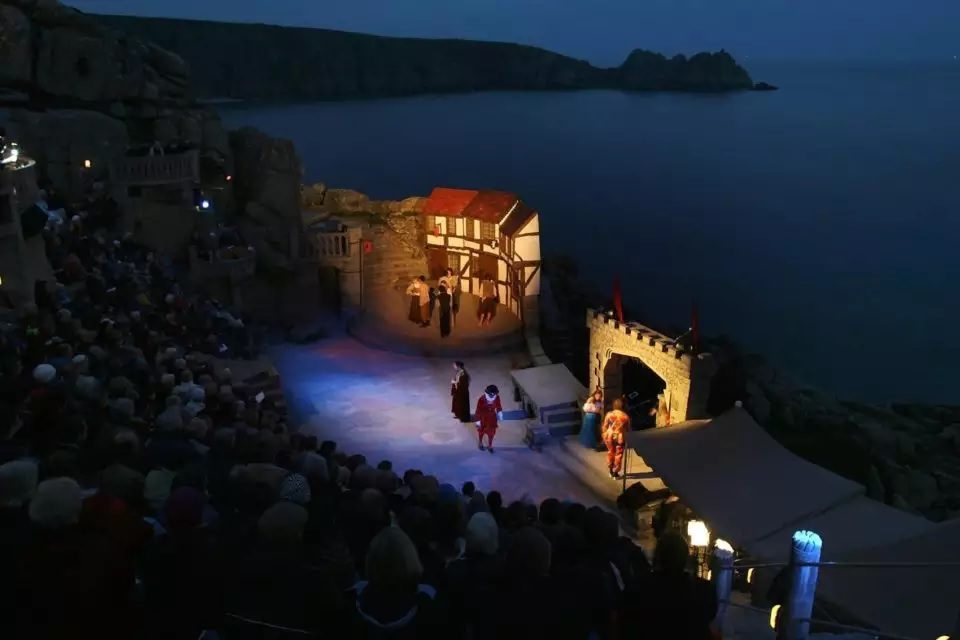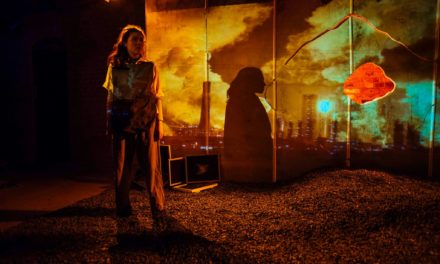I have seen performances in a theatre-on-wheels, an old Welsh steelworks, and a Victorian gentlemen’s toilet. I have helped cook a meal for an audience in the open air. I have can-canned on stage in a desolate industrial estate and danced in the rain to Katy Perry’s Roar on an ancient Roman ruin. I have spent all night in an abandoned playhouse, hunting for ghosts–and finding them.
Britain has some of the most remarkable and unusual theatres in the world. In 2016, I decided to set out to visit them. I wanted to get off the beaten track and discover stages in unlikely settings, with fascinating histories or that have thrived against the odds. Twenty Theatres To See Before You Die is an account of the adventure I had and a love letter to this country’s most special performance venues.
My passion for theatres began early in life. As a child at the Theatre Royal Bath, I’d fallen in love with the plush red curtains and gilt ornamentation; the itch of velvet on the back of my legs and that special smell of dust that’s stayed too long in the dark.
Later, I became intoxicated with the hubs of the leftfield performance scene, spending my summers hanging out at Edinburgh Fringe venues like Summerhall, an old veterinary college still replete with jars of animal parts pickled in formaldehyde. In London, it was the giddy goings-on at Battersea Arts Centre and the Shunt Vaults that beguiled me, and I spent hours and hours getting lost in immersive performances that invited audiences to delve into the nooks and crannies of the buildings where they took place.
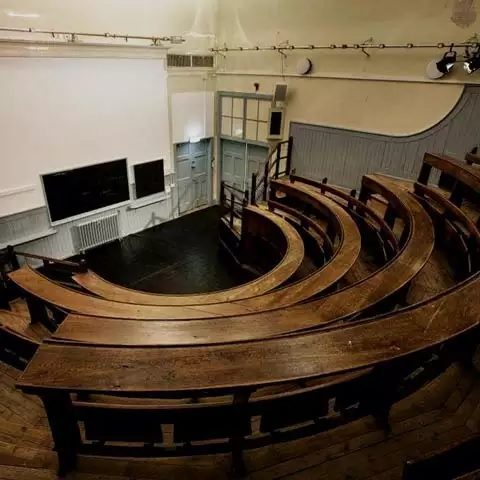
Performances at Summerhall in Edinburgh take place in an old anatomy lecture theatre
More recently I’d been working as executive director of Camden People’s Theatre: a humble off-West End venue in an old pub, where none the less I’d experienced the remarkable – artists transforming our tiny stage with cardboard boxes and gaffer tape, creating a whole new universe. I felt certain that places like this were important. In a society that was–in the wake of the vote to leave the EU–in a state of flux, these venues dedicated to the business of sharing stories seemed to matter more than ever.
Still, it was easy to feel jaded, sometimes, when so much of my day job revolved around stressing about box-office figures and fixing leaking toilets. Easy to feel cynical, too, about the lack of diversity on Britain’s stages; high ticket prices that seemed to mark theatres as the preserve of the privileged and not relevant to the lives of ordinary people at all.
So I decided to get out on the road. I wanted to remind myself what had made me fall in love with Britain’s theatres in the first place; to find out what makes a great theatre; and why theatres continue to play such an important role in the lives of so many, in spite of the ongoing threat from funding cuts, reduced arts education and a culture of instant online gratification.
My trip took me all the way from the tip of Cornwall to the Isle of Mull. I eschewed the glitter of London’s West End, instead favoring the offbeat places, unlikely to make headlines or attract celebrity stars. There was the theatre started in a cow byre on a remote island (Mull Theatre, Isle of Mull); the footings of an Elizabethan playhouse, concealed in the basement of a 1980s tower block (The Rose, London).
I visited a private Victorian auditorium where Percy Bysshe Shelley’s heart is purported to have been kept in a silk-lined box (Shelley Theatre, Boscombe, Dorset); a playing space with a floor fashioned from red Devonshire earth (Tara Theatre, London).
By the end of my journey, I’d visited 20 remarkable theatres. My trip reminded me of the crucial role theatres have played in the life of this country for nearly two millennia. What moved me more than anything was how many people were willing to give so much to keep the doors of these theatres open, often at great personal cost. It showed me that the values of creativity, free expression, and community–embodied in the theatre–still underpin our society. And that has given me reason to feel hopeful.
Theatre by the Lake, Keswick
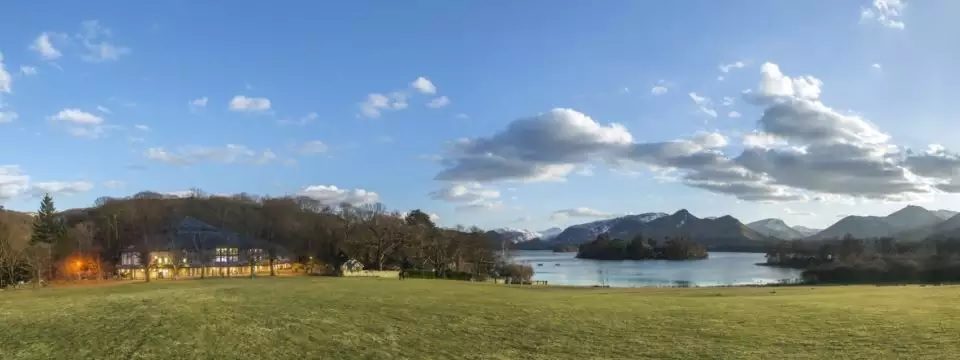
For special locations, Theatre by the Lake rivals the Minack–set on the edge of the Lake District’s Derwent Water, with Cat Bells mountain in the distance. The venue is the successor to “the Blue Box”–a theatre-on-wheels that traveled the country in the wake of the Second World War. The company of artists that ran it led a communal life, sharing the workload and living in identical bedsit caravans.
When the Blue Box was declared unroadworthy in 1975, it ended up in Keswick–and stayed here for over 20 years, until it was replaced by a permanent building. The Blue Box may be gone, but its spirit still influences what happens here today: plays are performed by a repertory company who spend six months living and working together, and productions tour to remote village halls across Cumbria.
Battersea Arts Centre, London
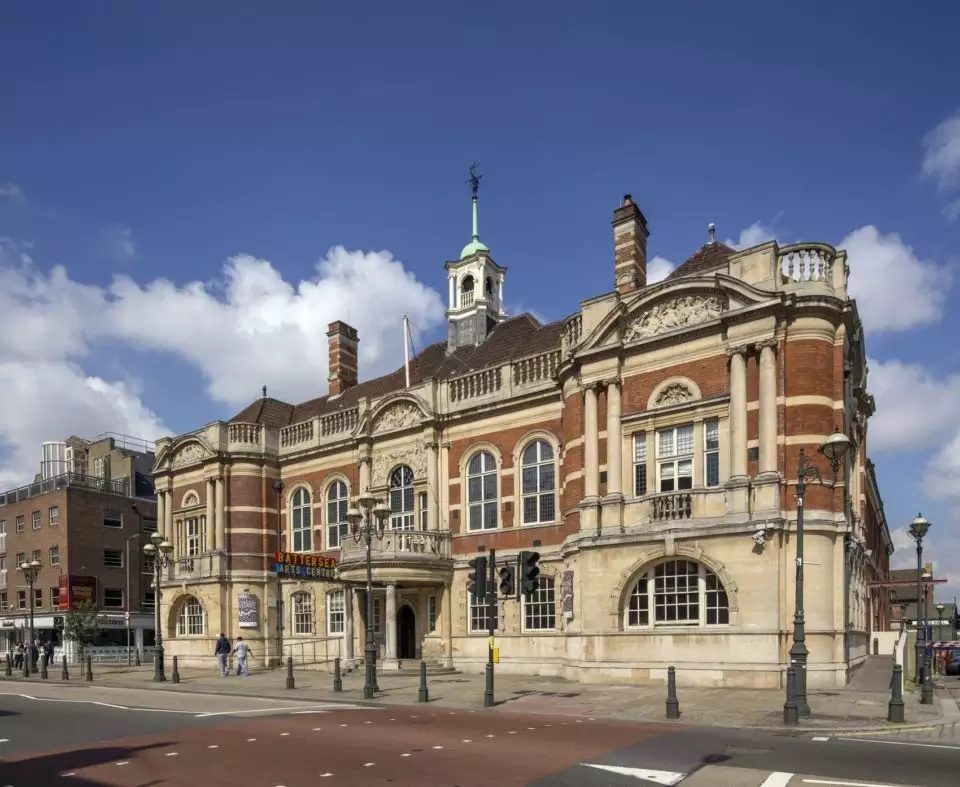
Photo: Morley von Sternberg
When BAC’s Grand Hall went up in flames in March 2015, many mourned the loss of this special place that held memories, not only of performances but of weddings, baptisms, political rallies, and other community events. BAC wasn’t built as a theatre; it started life as Battersea’s town hall in 1893, and has continued to operate as a local meeting point, with ceilidhs and Slimming World meetings running alongside experimental arts.
Thankfully, most of the building survived the fire–you can still admire original features like the mosaic floors and the carved figures of “Prudence” and “Justice.”
The reconstructed Grand Hall will open its doors in October with Bryony Kimmings’ I’m A Phoenix Bitch. A fitting tribute to the survival of one of Britain’s best-loved contemporary theatres–and a Battersea icon.
The Roman Theatre at Verulamium
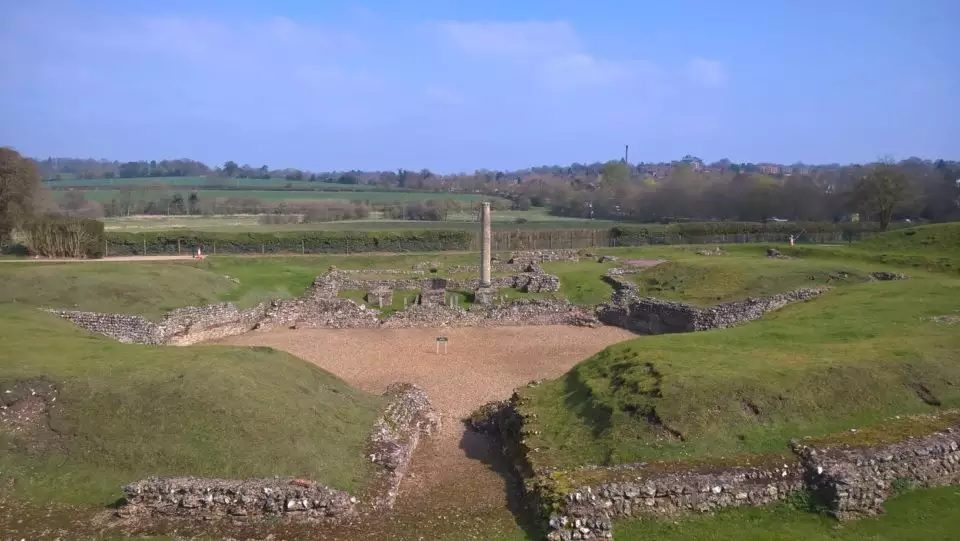
The oldest visible theatre site in the UK, built in around 140AD, is on the outskirts of St. Albans, in the remains of the Roman city of Verulamium. At one time up to 2,000 spectators flocked here to see the popular Greek and Latin plays of the period, as well as bullfights and sword fights. But by the 4th century, it had fallen into disuse–it became the town’s rubbish dump. It was excavated in the 1930s, and today, you can see the ruins of the stage, the dressing rooms, and the seating banks.
Standing on this site where people were attending performances nearly two millennia ago is a potent reminder of the continuing power of theatre.
The Minack, Porthcurno
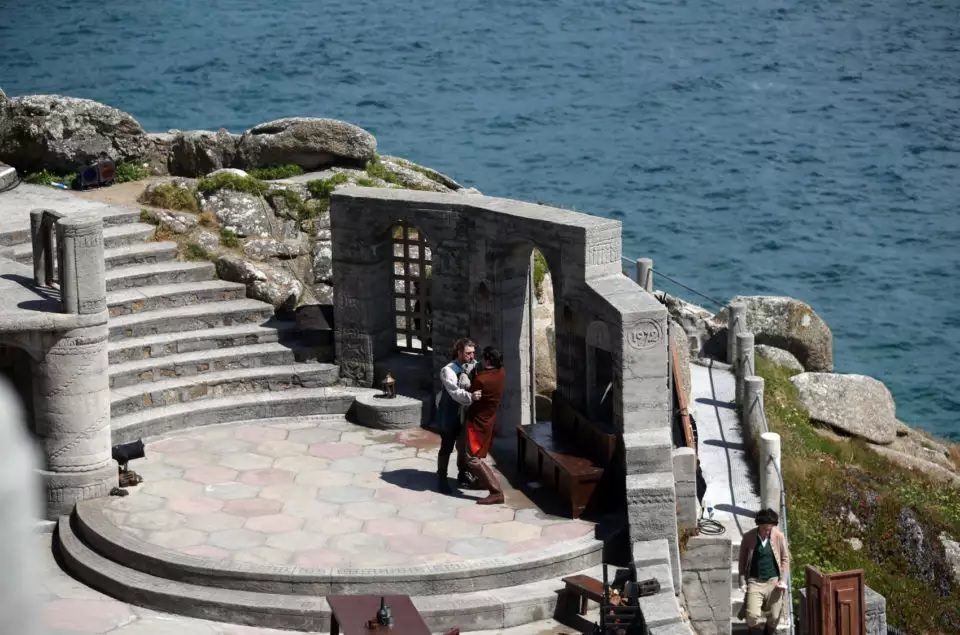
Photo: Matt Cardy/Getty Images
The Minack is surely the most spectacular theatre in the UK: an open-air auditorium carved from a Cornish cliffside, with far reaching views of the Atlantic–audiences have reported spotting dolphins and basking sharks during performances. It looks like a remnant from a forgotten past race, but it was actually built in the early 1930s, almost single-handed, by Rowena Cade, a sprightly amateur drama enthusiast.
When the theatre was taken over as a lookout by the army in the Second World War, it was largely destroyed. Stone by stone, Cade rebuilt it. In spite of mixed fortunes for the Minack over the years, she kept faith with her creation to the last, making improvements until the very end of her life.
Slunglow’s HUB, Leeds
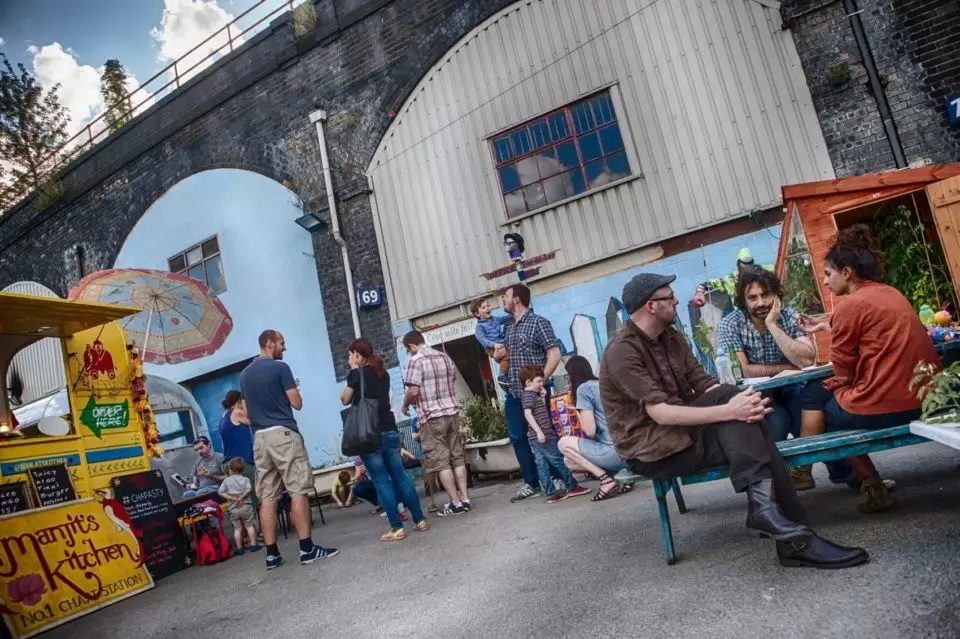
Slunglow’s HUB is in the unlikeliest of settings–a strand of five disused railway arches in Holbeck South Leeds–but that’s exactly what is so delightful about it. Make your way from the station across an unprepossessing industrial estate, and you’ll find yourself in a magical place filled with curios: a gold telephone box, a candy floss machine, tulip-filled bathtubs, a “memory cabinet.”
Slunglow treats their visitors as valued guests. Artists are able to stay here in a dormitory while they develop shows, all performances are pay-what-you-decide, and audiences are often provided with a free hot meal in the interval. Although if you hang around, you might well find yourself roped into helping with the washing up.
Tara, London
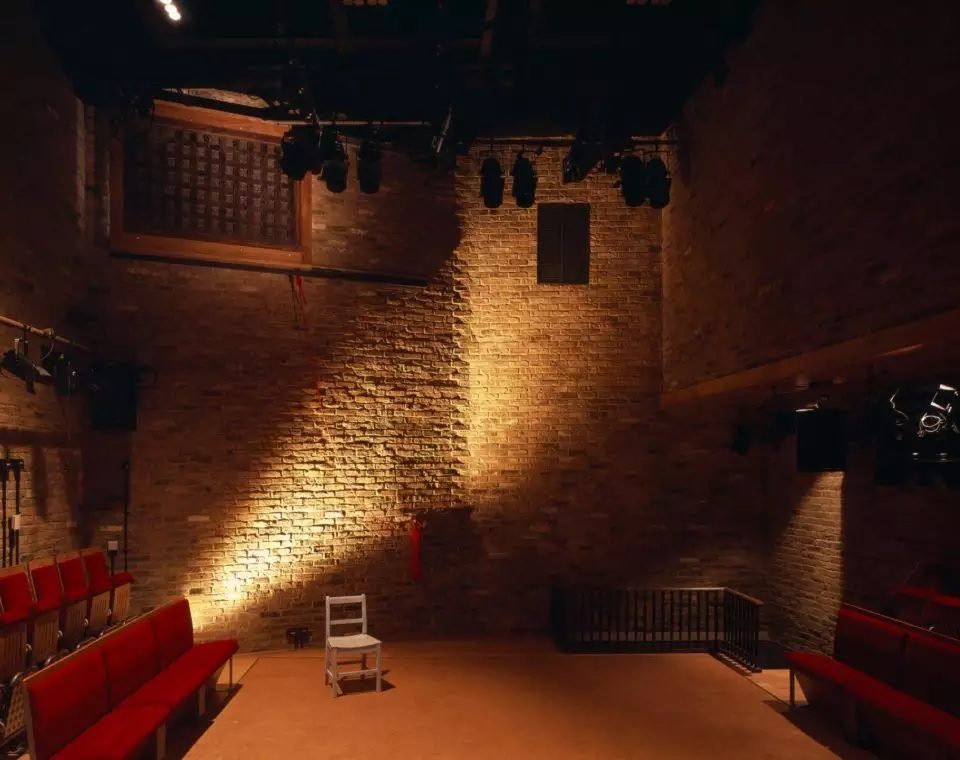
Photo: Helene Binet
There’s something utterly transporting about this beautiful, diminutive theatre in London’s Earlsfield. Step through the old Indian double doors that adorn its Edwardian terraced frontage, and you’ll find a playing space with a red earth floor: the only one of its kind in the country. It also has a hidden courtyard, filled with flowers, tea lights, and colorful bicycles–a fine spot for a pre-show glass of wine on a sunny evening.
The home of Tara Arts, a theatre company created in the wake of the racially motivated murder of Gurdip Singh Chaggar in 1976, Tara Theatre is dedicated to connecting cultures: a place set apart from the hustle and bustle of the city, and yet completely linked to the diversity of the community that surrounds it.
Contact, Manchester
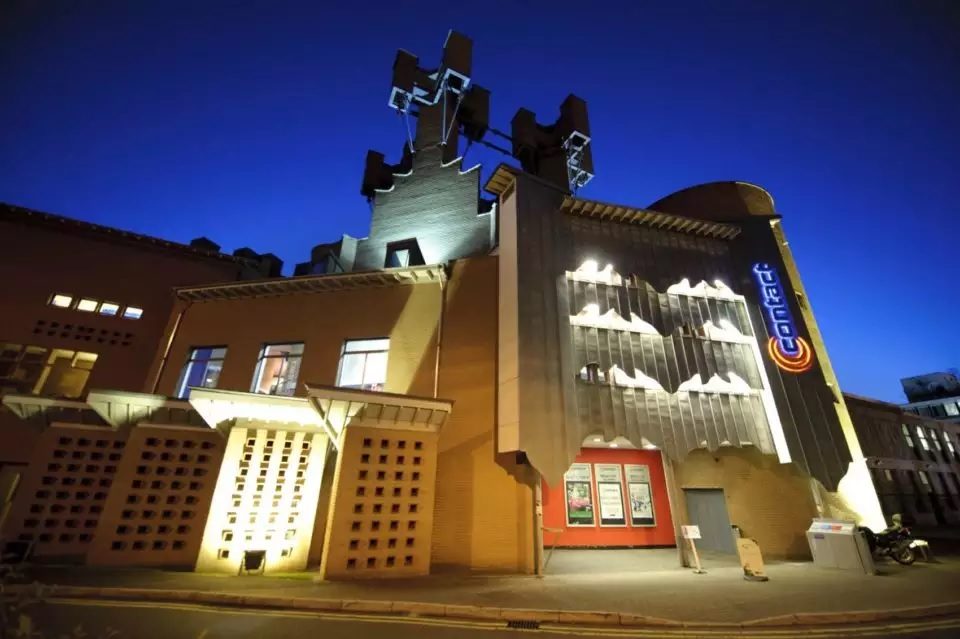
Photo: Joel Chester Fildes
What happens when you put the kids in charge? At Manchester’s Contact, you can find out. In a topsy-turvy space full of brightly colored mezzanines, high spec performance spaces, and digital studios, all the decisions are led by young people–from the shows presented, to the design of the posters outside.
This is anything but a typical night out at the theatre. You’re as likely to encounter beatboxers staging an impromptu gig by the fire exit or a group of young radio producers debating the politics of their medium as you are to hear any Shakespeare here–and it’s all the better for it. The venue is currently undergoing an extensive renovation and will be open to the public once again in 2019.
Twenty Theatres To See Before You Die by Amber Massie-Blomfield was published on Friday, May 25 (Penned in the Margins, £14.99)
This article originally appeared in Inews on May 21, 2018, and has been reposted with permission.
This post was written by the author in their personal capacity.The opinions expressed in this article are the author’s own and do not reflect the view of The Theatre Times, their staff or collaborators.
This post was written by Amber Massie-Blomfield.
The views expressed here belong to the author and do not necessarily reflect our views and opinions.

